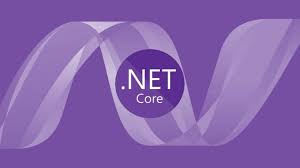
Getting Started with .NET Core MVC: A Beginner's Guide

Ayush Acharya
Full Stack Developer
.NET Core MVC is a powerful framework for building web applications. Let's explore how to get started with this modern, cross-platform framework.
Understanding .NET Core MVC
MVC (Model-View-Controller) is a design pattern that separates an application into three main components: - Model: Data and business logic - View: User interface - Controller: Handles user input and updates the model
Prerequisites
- Development Environment
- Required Tools
Setting Up Your First Project
- Create a New Project
- Project Structure
- Basic Configuration
// Add services to the container builder.Services.AddControllersWithViews();
var app = builder.Build();
// Configure middleware if (!app.Environment.IsDevelopment()) { app.UseExceptionHandler("/Home/Error"); app.UseHsts(); }
app.UseHttpsRedirection(); app.UseStaticFiles(); app.UseRouting(); app.UseAuthorization();
app.MapControllerRoute( name: "default", pattern: "{controller=Home}/{action=Index}/{id?}");
app.Run(); ```
Creating Your First MVC Components
- Model
- Controller
public ProductController(ILogger<ProductController> logger) { _logger = logger; }
public IActionResult Index() { var products = new List<Product> { new Product { Id = 1, Name = "Product 1", Price = 99.99m }, new Product { Id = 2, Name = "Product 2", Price = 149.99m } }; return View(products); } } ```
- View
<h2>Products</h2>
<table class="table"> <thead> <tr> <th>Name</th> <th>Price</th> <th>Actions</th> </tr> </thead> <tbody> @foreach (var product in Model) { <tr> <td>@product.Name</td> <td>@product.Price.ToString("C")</td> <td> <a asp-action="Edit" asp-route-id="@product.Id">Edit</a> | <a asp-action="Details" asp-route-id="@product.Id">Details</a> </td> </tr> } </tbody> </table> ```
Working with Data
- Entity Framework Core
public DbSet<Product> Products { get; set; } } ```
- Database Configuration
- Repository Pattern
Adding Authentication
- Identity Setup
- Authorization
Best Practices
- Code Organization
- Security
- Performance
Deployment
- Local Deployment
Publish the application dotnet publish -c Release ```
- Cloud Deployment
- CI/CD Pipeline
Common Challenges and Solutions
- Performance Issues
- Security Concerns
- Scalability
Conclusion
Getting started with .NET Core MVC is straightforward, but mastering it requires practice and understanding of web development concepts. Key takeaways: - Understand the MVC pattern - Follow best practices - Implement proper security - Optimize performance
Remember to: - Keep learning and experimenting - Follow the official documentation - Join the .NET community - Contribute to open-source projects
The .NET Core MVC framework provides a robust foundation for building modern web applications. With its cross-platform capabilities, strong community support, and continuous updates, it's an excellent choice for both beginners and experienced developers.